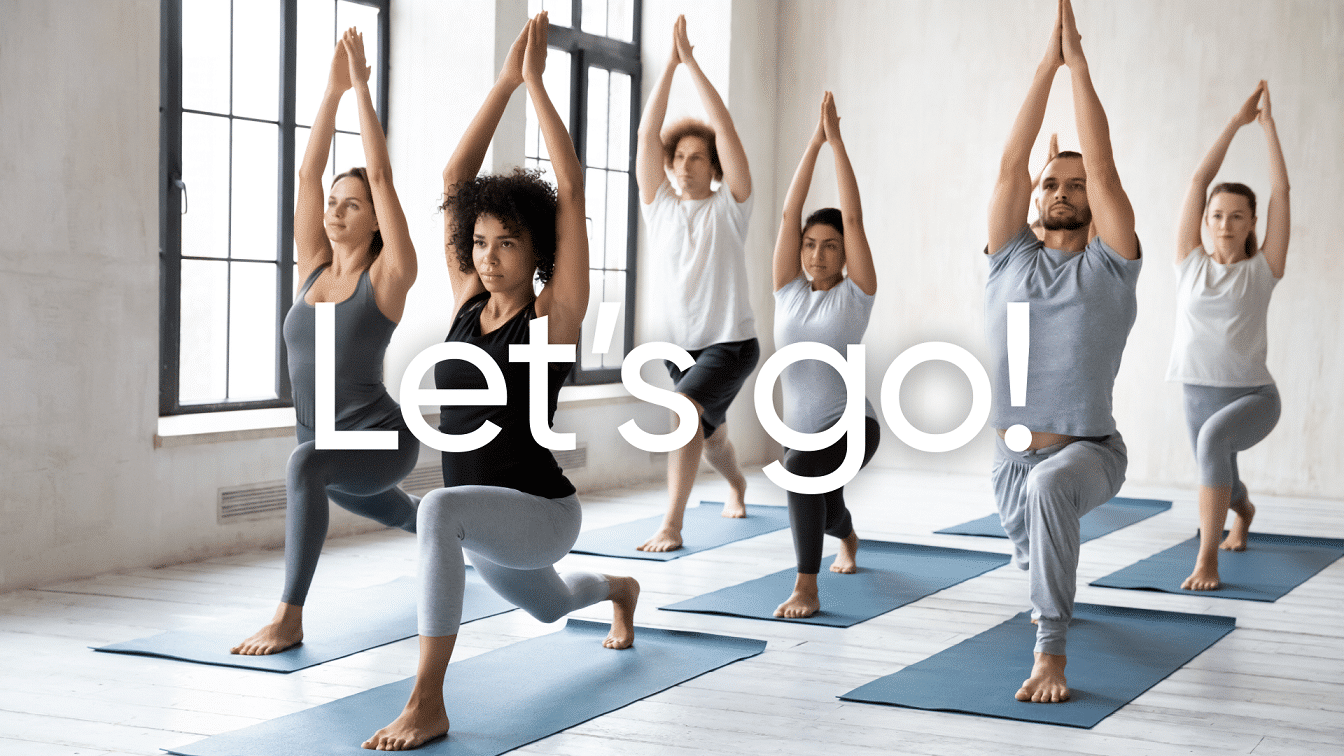Does the word “cardio” trigger images of runners dressed up in fancy gear, wheezing past you as you walk your dog, or logging miles on a treadmill? If so, you might be surprised to know that walking can also be considered a form of cardio exercise.
The word “cardio” is short for cardiovascular exercise, which refers to any type of movement that relies on the heart to pump blood and oxygen to the muscles (1). So, technically speaking, anything that gets your heart rate up can be considered cardio.
That said, there are different types of cardio exercises, and walking is on the lower-intensity end of the spectrum. Being low-intensity doesn’t mean it’s not effective, though. Walking has a host of health benefits and can even help you lose weight.
Here’s what you need to know about walking and cardio, plus tips on how to make the most of your walks.
How Walking Works Just Like Other Forms Of Cardio
When you walk, your heart rate increases and your breathing quickens. This happens because your body is working to supply your muscles with the oxygen-rich blood they need to keep in motion.
The same thing happens when you do any other type of cardio exercise, like running, swimming, or biking. Your heart rate will increase and you’ll start breathing more heavily as your body ramps up to meet the demands of the activity.
The main difference between walking and other forms of cardio is the intensity. When you walk, your heart rate might increase to anywhere from 60 to 85 percent of its maximum beat per minute. For most people, that’s a fairly low-intensity workout.
However, there are ways to ramp up the intensity of your walks and make them more challenging. For example, you can walk faster, add hills or inclines, or carry hand weights. The more intense your walk, the more your heart has to work, and the more calories you’ll burn.
Read More: Walking With Weighted Vest: The Ultimate Guide
Benefits Of Walking That Make It Worthwhile
Even though walking is a low-intensity exercise, it still has plenty of benefits.
1. Improves Cardiovascular Health
Cardiovascular disease is the leading cause of death worldwide. Lifestyle choices, like smoking, eating a poor diet, and being inactive, are major risk factors (4).
Regular walking can help reduce your risk of developing cardiovascular disease (18). For one, it increases aerobic capacity, which is a measure of how well your heart and lungs work together to supply oxygen to your muscles.
When you adopt a walking program, you’ll notice you don’t feel winded and out of breath as quickly as you used to.
Walking can also help lower blood pressure and cholesterol levels, two other risk factors for heart disease (19).
2. Helps With Weight Loss And Maintenance
If you’re trying to lose weight or prevent weight gain, walking can be an effective strategy. That’s because it helps you burn calories.
For example, a 155-pound person will burn about 175 calories by walking at 4mph for 30 minutes (3). That may not sound like much, but it can add up over time. If you walk for 30 minutes every day, you’ll burn an extra 1,050 calories per week. And that can lead to weight loss.
Walking can also help you keep the weight off in the long term. In one study, people who lost weight and then continued walking for at least 40 minutes a day had the lowest risk of gaining it back (5).
3. Boosts Mood And Relieves Stress
Walking can also improve your mental health. It can help reduce stress and anxiety and boost mood and energy levels (17).
Like other forms of exercise, walking helps release feel-good chemicals called endorphins (6). At the same time, it can also help reduce the levels of stress hormones like cortisol.
Walking out in the sunlight can also be helpful. Sunlight exposure helps your body produce vitamin D, which is linked to a lower risk of depression (15).
4. Improves Sleep Quality
If you have trouble sleeping, walking can help. It can improve sleep quality and increase the amount of time you spend in deep sleep, which is the most restorative phase of sleep (20).
Walking helps tire your body out so you can sleep better at night. And the endorphins released during exercise can also help improve your mood and reduce stress, which can make it easier to fall asleep (6).
If you tend to let yourself off the hook, raise the white flag when things get tougher than you expected, send yourself on an unconscious binge-eating trip – BetterMe app is here to help you leave all of these sabotaging habits in the past!
5. Increases Energy Levels
Ironically, even though walking can make you feel tired, it can also increase your energy levels.
Regular exercise has been shown to improve fatigue and increase energy levels in people who are suffering from conditions like heart disease, cancer, and arthritis. It can also help improve energy levels in healthy adults (11).
This is because exercise helps increase the production of mitochondria, which are the powerhouses of your cells. Mitochondria produce energy, so the more you have, the more energy you’ll have (14).
6. Strengthens Bones And Muscles
Walking can also support strong bones and muscles (16). That’s important for people of all ages, but it’s especially important as you get older.
Osteoporosis, a condition that causes bones to become weak and brittle, is a major concern for older adults. Walking can help improve bone density and reduce the risk of osteoporosis (13).
Walking can also help strengthen muscles. And the stronger your muscles are, the more support they can provide for your joints. That can reduce the risk of injuries.
7. Improves Cognition
Walking helps improve cognitive function. In one study, older adults who walked for exercise had better memories and improved attention spans (2).
Other studies have found that walking can help improve brain function in people of all ages. It can improve executive function, which is the ability to plan and organize. And it can help with problem-solving and decision-making (7).
These cognitive benefits may be because walking increases blood flow to the brain. Walking can also help reduce inflammation and protect brain cells from damage.
8. Improves Balance And Coordination
Walking can also help improve balance and coordination, which can prevent falls. This is especially important for older adults, who are at a higher risk of falling (12).
Walking can also help you maintain your independence as you age. That’s because it can help you stay mobile and active, which are both key to healthy aging.
Read More: Walking With Ankle Weights: Benefits, Drawbacks, And Essential Information
9. Reduces The Risk Of Chronic Disease
Walking can also reduce the risk of chronic diseases like heart disease, stroke, diabetes, and cancer. This is because it helps improve risk factors like cholesterol levels, blood pressure, and blood sugar levels (8) (10).
10. Easy And Accessible
One of the best things about walking is that it’s easy and accessible. Just about anyone can do it, regardless of their fitness level. And you don’t need any special equipment. All you need is a good pair of shoes.
Walking is also a low-impact form of exercise, which means it’s gentle on your joints. That makes it a good option for people with joint problems.
Walking is a great way to get started on a fitness program. Consistently adding more steps to your day will give you results and motivate you to keep going.
What Is A Good Walking Speed For Cardio?
To achieve specific health and fitness goals, it is often recommended to walk at certain speeds. However, the best walking speed for cardio depends on your individual fitness level and goals.
A brisk pace is generally considered to be a walking speed that is faster than normal but not too fast to where you are out of breath or unable to carry on a conversation. For most people, a brisk pace would be somewhere between 3-4 miles per hour.
If your goal is general fitness, then walking at a brisk pace is a great way to get your heart rate up and increase your overall cardiovascular endurance.
If you are trying to lose weight, you may want to walk a little bit faster to increase the number of calories you burn. A walking speed of 4-5 miles per hour is generally considered to be a moderate pace, and it should make you feel somewhat out of breath.
Walking at a moderate pace is still a great way to improve your cardiovascular fitness and lose weight, but you may want to add in some intervals of faster walking to really maximize the number of calories you burn.
Other ways to increase the intensity of your walk and burn more calories include:
- Walking on an incline/up a hill – this will force your muscles to work harder and make your heart pump faster
- Walking with weights – wearing a weighted vest will add resistance and make your walk more challenging
- Walking intervals – alternating walking fast for 1 minute with walking slow for 2 minutes is a great way to get your heart rate up without being too intense
BetterMe app is a foolproof way to go from zero to a weight loss hero in a safe and sustainable way! What are you waiting for? Start transforming your body now!
How Far Should You Walk?
The distance you walk is really up to you and your goals. If you are just starting, it is probably best to start with shorter distances and gradually increase as you get more fit.
A good goal to start with is walking for 30 minutes at a time. This is a great way to improve your overall cardiovascular fitness without putting too much stress on your body. As you become more fit, you can gradually increase the distance you walk.
Walking 10,000 steps per day is often recommended as a goal for improving overall health. This equates to about 5 miles, which is a great goal to aim for if you are trying to improve your fitness level.
Which Is Better Cardio: Walking Or Biking?
There is no definitive answer to this question. It depends on your goals and preferences.
Both walking and biking are great forms of cardio. They both provide the same health benefits, including improved cardiovascular health, increased weight loss, reduced stress levels, and more (8) (9).
Walking is better suited for:
- People who are new to exercise
- People who have joint problems
- People who want a low-impact workout
- People who don’t know how to ride a bike
- People who can’t afford a bike
Biking is better suited for:
- People who are already physically fit
- People who want a more challenging workout
- People who live in spacious areas with few pedestrians
- People who have access to a bike
The Bottom Line
Walking is a simple and effective form of exercise. It has many health benefits, including improving cardiovascular health, strengthening bones and muscles, and reducing the risk of chronic diseases. Plus, it’s easy to do and doesn’t require any special equipment.
DISCLAIMER:
This article is intended for general informational purposes only and does not serve to address individual circumstances. It is not a substitute for professional advice or help and should not be relied on for making any kind of decision-making. Any action taken as a direct or indirect result of the information in this article is entirely at your own risk and is your sole responsibility.
BetterMe, its content staff, and its medical advisors accept no responsibility for inaccuracies, errors, misstatements, inconsistencies, or omissions and specifically disclaim any liability, loss or risk, personal, professional or otherwise, which may be incurred as a consequence, directly or indirectly, of the use and/or application of any content.
You should always seek the advice of your physician or other qualified health provider with any questions you may have regarding a medical condition or your specific situation. Never disregard professional medical advice or delay seeking it because of BetterMe content. If you suspect or think you may have a medical emergency, call your doctor.
SOURCES:
- Aerobic vs anaerobic exercise training effects on the cardiovascular system (2017, ncbi.nlm.nih.gov)
- A Review of the Effects of Physical Activity and Exercise on Cognitive and Brain Functions in Older Adults (2013, hindawi.com)
- Calories burned in 30 minutes of leisure and routine activities (n.d., health.harvard.edu)
- Cardiovascular diseases (CVDs) (2021, who.int)
- Effect of Dietary Adherence with or without Exercise on Weight Loss: A Mechanistic Approach to a Global Problem (2009, academic.oup.com)
- Effects of Exercise and Physical Activity on Anxiety (2013, frontiersin.org)
- Exercise Holds Immediate Benefits for Affect and Cognition in Younger and Older Adults (2013, ncbi.nlm.nih.gov)
- Is there evidence that walking groups have health benefits? A systematic review and meta-analysis (2015, ncbi.nlm.nih.gov)
- Leisure-Time Running Reduces All-Cause and Cardiovascular Mortality Risk (2014, sciencedirect.com)
- Low-Intensity Walking Activity is Associated with Better Health (2013, ncbi.nlm.nih.gov)
- Physical activity and feelings of energy and fatigue: epidemiological evidence (2006, pubmed.ncbi.nlm.nih.gov)
- Physical activity programs for balance and fall prevention in elderly (2019, journals.lww.com)
- The Effectiveness of Physical Exercise on Bone Density in Osteoporotic Patients (2018, hindawi.com)
- The Mitochondrion – Molecular Biology of the Cell (2020, ncbi.nlm.nih.gov)
- Leisure-Time Running Reduces All-Cause and Cardiovascular Mortality Risk (2014, sciencedirect.com)
- Walking is related to bone density and rates of bone loss (1994, pubmed.ncbi.nlm.nih.gov)
- Walking on sunshine: scoping review of the evidence for walking and mental health (2018, pubmed.ncbi.nlm.nih.gov)
- Walking – the first steps in cardiovascular disease prevention (2010, ncbi.nlm.nih.gov)
- Walking Versus Running for Hypertension, Cholesterol, and Diabetes Mellitus Risk Reduction (2013, ahajournals.org)
- Walk to a Better Night of Sleep: Testing the Relationship Between Physical Activity and Sleep (2019, ncbi.nlm.nih.gov)













